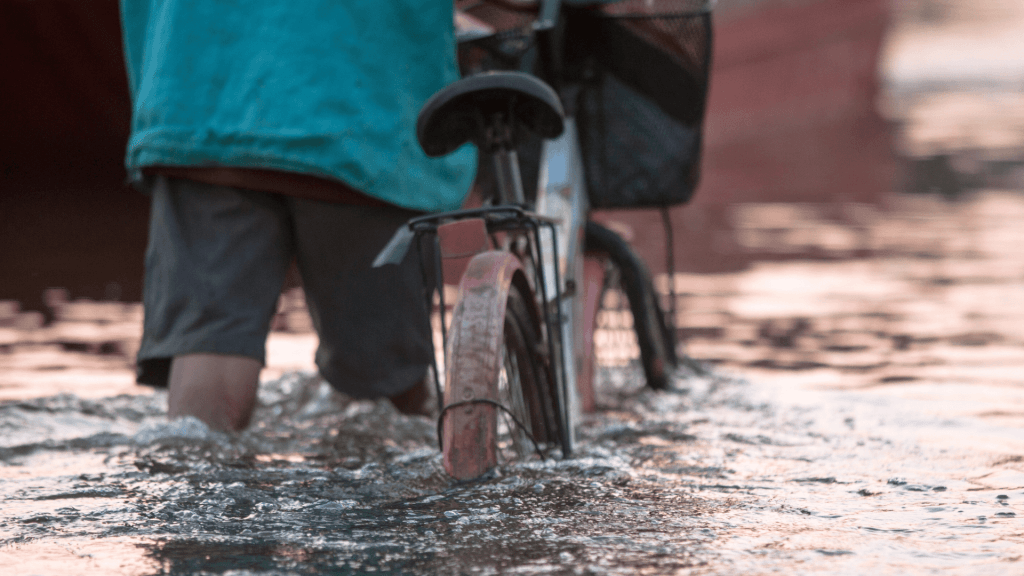New Zealand has seen its fair share of natural disasters, experiencing more than 150 severe weather events and natural disasters since ICNZ began keeping records in 1968! These events have had a profound impact on our homes, possessions and communities.
With NZ’s Pacific Ring of Fire location and deepening climate concerns, having the right insurance cover isn’t just a choice – it’s a necessity. Read on to learn how natural disasters affect house and contents insurance in NZ and get steps to help you safeguard your belongings.
Get clear on what EQC covers
Every homeowner with private house insurance in NZ automatically acquires the Earthquake Commission’s EQCover. The premium you pay to your insurance provider includes the EQCover premium. EQCover offers protection for residential properties and select residential land areas in the event of natural disasters – including earthquakes, landslips, volcanic eruptions, tsunami, hydrothermal activity, and storm and flood damage to residential land. Currently, the maximum EQCover available for your home is $300,000 + GST, known as the EQCover Building Cap, with a maximum excess of $3,450 including GST. But EQC doesn’t cover everything, including structures like swimming pools, tennis courts, and drains. It’s wise to visit the EQC website to gain a clear understanding of exactly what’s covered and what’s not.
Understand policy changes
Following the Canterbury earthquakes in 2010/2011 and the Kaikoura earthquake in 2016, EQC and NZ insurance companies have built better data sharing and loss modelling capability, enabling the sector to be more resilient to, and prepared for, different natural disaster scenarios.
Following a natural disaster, NZ insurers often reassess their policies, and changes may be made to accommodate evolving risks. For instance, at renewal time you might find your policy now includes cover for specific types of damage that were previously excluded due to their low likelihood. While additional cover is beneficial, it might come at a higher cost.
Natural disasters can reshape the risk landscape over time, so regular policy reviews with your insurance broker or insurer can help you stay informed and make necessary adjustments. Reach out for a free, no-obligation review of your policies. We’ll take a look at alternatives and recommend the best options for you.
Manage your excess
Your excess is the amount you must pay before your insurance coverage comes into play. After a natural disaster, insurance companies may modify excess amounts to align with the risk associated with the area. It’s vital to understand how your excess might change in these circumstances. Make sure you have the financial means to cover your excess if necessary. Set aside your excess in a savings account or a similar fund to ensure it’s readily available when it’s needed.
Budget for premium increases
Global reinsurer Lloyds of London ranks New Zealand the 2nd highest natural disaster risk in the world, and the weather events earlier this year have only worsened this risk perception.
When a region is hit by a natural disaster, NZ insurance companies face substantial costs in claims payouts. Consequently, reinsurers and insurers reevaluate the risks associated with insuring properties in affected areas which can lead to premium hikes for policyholders. It’s estimated that the impacts of the Auckland Anniversary Floods and Cyclone Gabrielle will result in a total of $3.18b in claims, and we’re already seeing some insurers increase their premiums by 20-30% to manage this.
While increasing premiums can feel like a financial burden, it’s a necessary step to ensure insurance companies can continue offering adequate cover in high-risk areas of New Zealand. At Moneybox, our team is committed to helping you find the right balance between comprehensive cover and affordable premiums, so that your home and contents remain protected without straining your finances.
Re-calculate your sum insured
When disaster strikes, the last thing you want to worry about is whether your house and contents insurance will cover the damage. At renewal time, we recommend re-calculating the cost to rebuild your home and replace your contents.
Calculate the cost to rebuild your home:
Make sure your sum insured is sufficient to cover all the costs of rebuilding your home, as this represents the maximum payout you’ll receive. Rebuild costs can be influenced by factors like remote location, difficult accessibility, or unique features on your property. To determine your sum insured, you can use the Cordell Sum Sure Calculator or consult a professional property valuer. Keep in mind that calculators provide estimates only and may not account for rapidly rising building costs or unique features of your home.
Calculate the cost to replace your home contents:
Accurately calculating the replacement value of home contents is also crucial. This ensures you have the necessary funds to replace your possessions and restore your home’s contents to their pre-disaster condition. If you own valuable items like jewellery, artwork, electronics, or antiques, consider adding additional coverage to your policy to ensure they are adequately protected. You can use a Home Contents Sum Insured Calculator to estimate the cost to replace your belongings.
Buy and build responsibly
Purchasing and developing property with a long-term perspective is essential, especially in areas vulnerable to climate-related events. The anticipated increase in such events may prompt insurance providers to decline new clients in affected regions and councils may restrict future construction in areas prone to climate-related risks. In regions already impacted by climate change, depopulation strategies, like ‘managed retreat,’ have already been suggested. To preserve insurance coverage, it’s vital to carefully consider where you’re buying or building, anticipate climate-related challenges, and proactively manage risks.
Take proactive steps to understand your policy, manage your excess, and ensure your coverage is up-to-date. It can make a significant difference when disaster strikes. Don’t leave the protection of your most valuable assets to chance. Get in touch for a completely free, no-obligation chat with one of our insurance advisers today.

